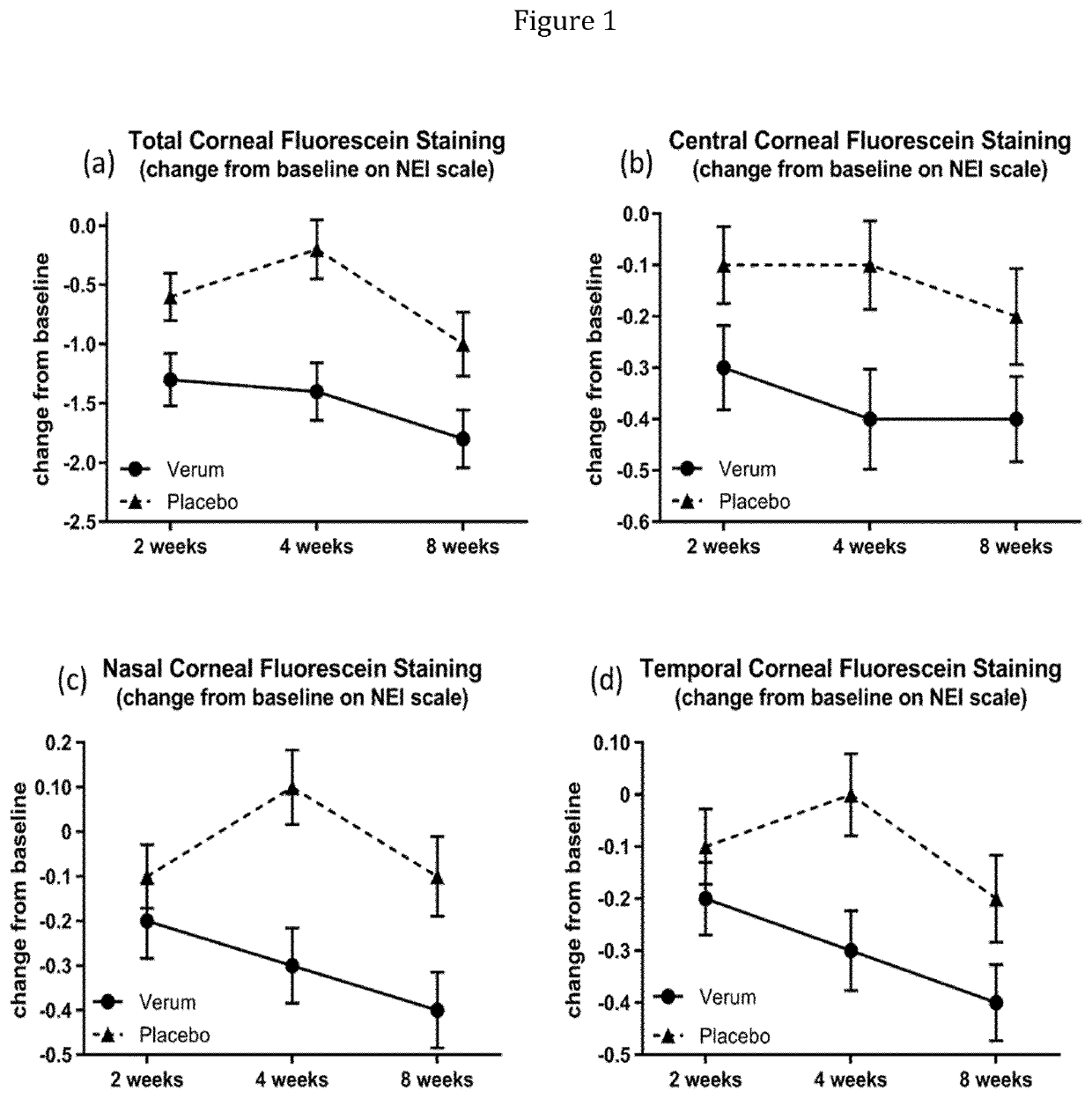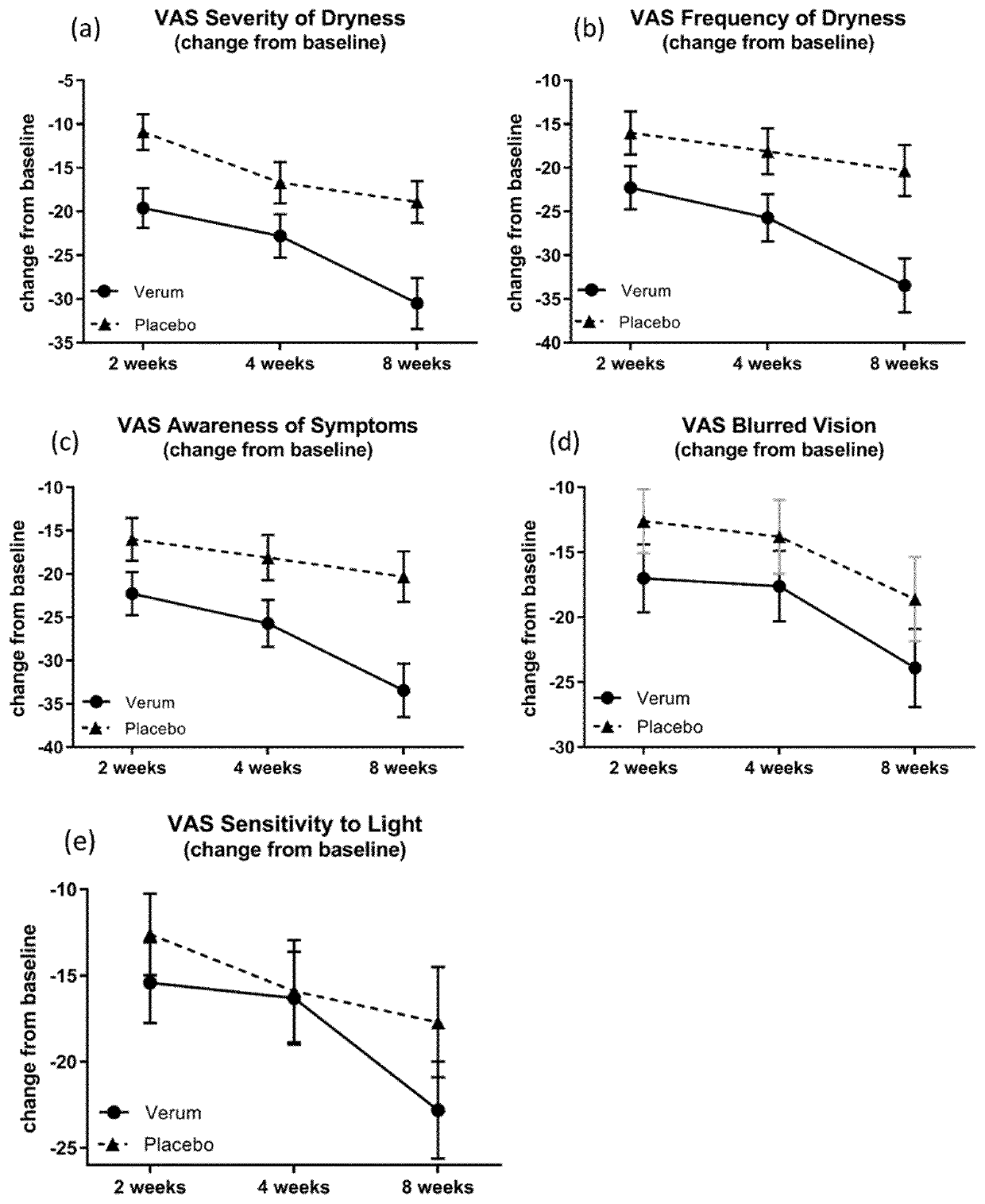Opthalmic compositions comprising f6h8
a technology of semifluorinated alkanes and compositions, which is applied in the field of opthalmic compositions comprising semifluorinated alkanes, can solve the problems of dry eye disease, dry eye, and often even ocular surface damage, and achieve the effect of delayed ophthalmic releas
- Summary
- Abstract
- Description
- Claims
- Application Information
AI Technical Summary
Benefits of technology
Problems solved by technology
Method used
Image
Examples
example 2
[0707]The study is conducted to evaluate the influence of 1-perfluorohexyl-octane (F6H8, NovaTears®) on tear film thickness in patients with mild to moderate dry eye disease. Herein the administration of 1-perfluorohexyl-octane is compared to Hydrabak (0.9% sodium chloride, Laboratoires Théa).
[0708]48 patients (safety population) are randomized (1:1 ratio) to receive either F6H8 or Hydrabak. One drop of F6H8 (droplet volume=10-11 μl) or Hydrabak is instilled in each eye 4 times daily for 30 days. DED relevant clinical measures are recorded at Visit 1 (day 0, baseline), Visit 2 (15±2 days) and Visit 3 (30±3 days). The primary outcome variable includes Tear film thickness (TFT) as measured with high resolution optical coherence tomography (OCT), while secondary outcome variables comprised Lipid Layer Thickness (LLT) of the tear film (with LipiView Interferometer), Non-Invasive Tear Break Up Time (NITFBUT) with Bon Antares Tear Film Topographer, Dynamic Meibomian Gland Imaging (DMI) wi...
example 3
[0715]A Phase 2, Multi-Center, Randomized, Double-Masked, Saline-Controlled Study to Evaluate the Effect of 1-Perfluorohexyloctane (NOV03; F6H8) at two different dosing regimens on signs and symptoms of Dry Eye Disease (DED). The study was performed at 11 investigational cites in the United States. The study was reviewed and approved by the respective ethics committees and registered at www.clinicaltrials.gov (NCT03333057).
[0716]The study is performed to evaluate the safety, efficacy and tolerability of F6H8 at two different dosing regimens compared to saline on signs and symptoms of Dry Eye Disease.
[0717]Study subjects receive one of the following treatments over a period of 4 visits on day 1, 15, 30 and 60:[0718](1) F6H8 (NOV03), 4 times daily (QID);[0719](2) F6H8(NOV03), 2 times daily (BID);[0720](3) Saline solution (0.9% sodium chloride solution), 4 times daily (QID);[0721](4) Saline Solution (0.9% sodium chloride solution), 2 times daily (BID).
[0722]In the BID treatment, study ...
PUM
| Property | Measurement | Unit |
|---|---|---|
| net volume | aaaaa | aaaaa |
| net volume | aaaaa | aaaaa |
| net volume | aaaaa | aaaaa |
Abstract
Description
Claims
Application Information
 Login to View More
Login to View More - R&D
- Intellectual Property
- Life Sciences
- Materials
- Tech Scout
- Unparalleled Data Quality
- Higher Quality Content
- 60% Fewer Hallucinations
Browse by: Latest US Patents, China's latest patents, Technical Efficacy Thesaurus, Application Domain, Technology Topic, Popular Technical Reports.
© 2025 PatSnap. All rights reserved.Legal|Privacy policy|Modern Slavery Act Transparency Statement|Sitemap|About US| Contact US: help@patsnap.com



